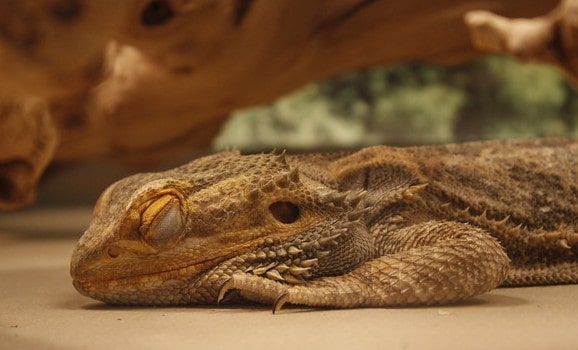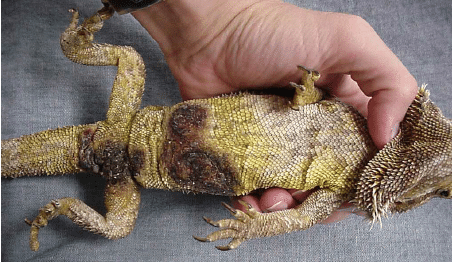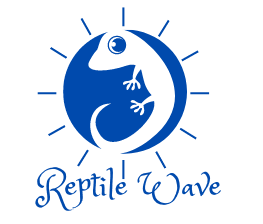When a bearded dragon is dead but not stiff, it could be due to factors such as environmental conditions, the time since death, underlying health issues, or the onset of decomposition. Rigor mortis, the stiffening of muscles after death, can be affected by the reptile’s environment, including temperature and humidity. In some cases, cold temperatures may slow down the process, while hot temperatures may speed it up.
Additionally, the timing of rigor mortis can vary based on the bearded dragon’s size, age, and overall health. Underlying health conditions or diseases might also affect the typical progression of rigor mortis. As decomposition sets in, the tissues of the reptile may become softer, potentially impacting the perception of stiffness.
What Are the Key Factors Affecting Rigor Mortis in Reptiles?

Exploring how the environment affects rigor mortis in reptiles helps us understand why their muscles stiffen after death.
Environmental Conditions
Impact of temperature and humidity levels on rigor mortis: Bearded dragons, like other reptiles, are sensitive to changes in their environment. The environmental temperature and humidity directly impact the onset and progression of rigor mortis. When a bearded dragon is found dead but not stiff, it could be due to the environmental conditions, especially if the temperature is either too cold or too hot.
Furthermore, cold temperatures may slow down the stiffening process, while excessively hot environments can accelerate it. This knowledge is crucial when investigating cases of bearded dragons that do not exhibit typical rigor mortis, aiding in determining whether the environmental conditions played a role in the unusual stiffness patterns observed.
Effects of cold and hot environments on the stiffening process: In the case of a bearded dragon being discovered dead but not stiff, it’s imperative to consider how extreme temperatures can affect the stiffening process. Cold environments can delay the onset of rigor mortis, causing the bearded dragon’s body to remain relatively pliable for a longer duration.
Conversely, excessively hot environments can hasten the stiffening process, leading to an accelerated progression of rigor mortis. These effects highlight the importance of maintaining appropriate temperature levels within the reptile’s enclosure to ensure a natural and timely progression of postmortem changes.
Time Since Death
Normal timing of rigor mortis in reptiles: The typical timing of rigor mortis in reptiles, including bearded dragons, ranges from a few hours to approximately 48 hours after death. Understanding this standard timeframe is essential when investigating cases where a bearded dragon is found dead but not exhibiting the expected stiffness.
By considering the time since death, one can assess whether the observed lack of rigidity aligns with the anticipated timeline, thereby aiding in identifying potential underlying factors contributing to the atypical presentation of rigor mortis.
Variation in onset and duration
| Factors Affecting Rigor Mortis in Bearded Dragons | Onset of Rigor Mortis | Duration of Rigor Mortis |
| Size of Bearded Dragon | Smaller individuals, approximately 150-250 grams: 2-4 hours | Larger individuals, over 250 grams: 6+ hours |
| Age of Bearded Dragon | Younger bearded dragons, typically under 2 years: 2-4 hours | Older bearded dragons, 7 years or more: Up to 72 hours |
| Health Conditions | Severe Calcium Deficiency: 1 hour | Systemic Infections: Up to 96 hours |
.
Underlying Health Conditions
Influence of diseases or health issues on the process of rigor mortis: In instances where a bearded dragon is discovered dead but not displaying typical signs of rigor mortis, it is essential to consider the potential influence of underlying health conditions or diseases. Certain illnesses can disrupt the natural progression of rigor mortis, leading to atypical patterns of postmortem changes in the reptile’s body.
By examining the possible influence of health issues on the stiffening process, one can gain insights into the broader health status of the bearded dragon, aiding in the identification of potential factors contributing to the observed absence of expected stiffness after death.
Examples of how metabolic disorders can affect stiffness after death:
Metabolic disorders can significantly impact the postmortem changes, including the progression of rigor mortis, in bearded dragons and other reptiles. In the context of a bearded dragon being found dead but not exhibiting typical signs of stiffness, understanding how metabolic disorders can alter the natural stiffening process is crucial.
Moreover, these disorders can lead to deviations from the expected patterns of rigor mortis, resulting in an atypical presentation of postmortem changes. Considering the potential impact of metabolic disorders provides valuable insights into the underlying physiological factors contributing to the observed absence of stiffness in the deceased bearded dragon.
What Are the Effects of Decomposition?

Decomposition is a complex process that significantly impacts the perception of stiffness in bearded dragons and other reptiles. It’s important to note that rigor mortis is a temporary phase of postmortem change that eventually gives way to the effects of decomposition. As decomposition progresses, the breakdown of proteins and enzymes softens the muscle tissues.
This softening can create a misleading appearance, as the body loses its rigidity. So, if you find a bearded dragon dead but not stiff, especially if it’s starting to break down, just looking at whether its muscles are stiff or not might not tell you the full story about what happened to it. Instead, one should consider the interplay between rigor mortis and decomposition.
In addition, decomposition in bearded dragons follows a structured sequence of stages, each with distinct characteristics. The first stage, autolysis, initiates cellular breakdown, leading to the eventual loss of rigor mortis. Subsequently, putrefaction begins, marked by gas release, odors, and tissue discoloration.
During this phase, muscle tissues may start to soften, complicating the interpretation of stiffness. The advanced decay stage, the final phase, ultimately results in the liquefaction of tissues, rendering the notion of rigor mortis obsolete. This process can unfold over a variable timeframe, influenced by environmental conditions such as temperature and humidity.
How to Handle the Situation When a Bearded Dragon Is Dead But Not Stiff?

Finding a bearded dragon that’s not moving but still soft can be confusing. Here’s what you can do when this happens.
Proper Care and Respect
Importance of handling the deceased bearded dragon with care and respect: When dealing with a deceased bearded dragon, it’s essential to approach the situation with sensitivity and respect. These reptiles are cherished pets and deserve dignified treatment, even after passing away. Practicing proper handling procedures, such as using gentle movements and avoiding unnecessary disturbances, not only honors the memory of the bearded dragon but also acknowledges the emotional connection that owners often develop with their pets.
Additionally, showing respect during the handling process helps maintain the integrity of the reptile’s remains, facilitating a more accurate assessment of the cause of death, should further investigation be necessary.
Considerations for contacting a veterinarian for guidance and assistance: In cases where a bearded dragon is found dead but not exhibiting typical signs of stiffness or if there are concerns about the reptile’s well-being prior to its passing, it’s advisable to seek the guidance of a veterinarian. Veterinarians specializing in reptile care can offer valuable insights and expertise in determining the cause of death and providing appropriate guidance on how to handle the situation.
Moreover, they can also offer support to owners who may be coping with the loss of their pet, providing information on proper disposal methods and offering counseling or resources to help manage the emotional impact of the event.
Ensuring Husbandry Conditions
It’s super important to take good care of your bearded dragons and other reptiles. That means making sure their home is just right. You need to check and control the temperature and how damp it is in their tank. They also need the right kind of light and to get enough UVB. And don’t forget to feed them a good mix of food to keep them healthy and happy.
Creating a suitable habitat that mimics the natural environment of bearded dragons promotes their physical and emotional well-being, reducing the risk of stress-related health issues and enhancing their overall quality of life.
When a bearded dragon passes away, it’s really important to check on the other pets you have at home, especially other reptiles. Keep an eye on how they’re acting and if they’re staying healthy. Sometimes, losing a friend can make them feel sad or sick, so it’s good to watch out for that.
In addition, providing additional care and attention to the surviving animals can help alleviate any potential emotional or behavioral changes they may experience. Creating a supportive environment that encourages social interaction and mental stimulation can aid in the adjustment process for both the surviving pets and their owners.
FAQ’s
A limp bearded dragon might indicate a health issue, such as metabolic bone disease or dehydration.
Bearded dragons typically don’t hibernate, but they might display reduced activity in colder temperatures.
Signs of a deceased bearded dragon include lack of movement, unresponsiveness, and cold limbs.
Act promptly by adjusting its habitat temperature, providing hydration, and seeking immediate veterinary care. Prompt intervention can improve the chances of saving a distressed bearded dragon.
No, bearded dragons cannot naturally regenerate lost limbs. In case of severe injury, consult a vet for appropriate care and treatment to ensure the best possible outcome for the dragon.
Tail discoloration or necrosis might indicate tail rot, often caused by injuries or improper shedding. Prompt vet intervention is crucial to prevent the spread of infection and ensure the well-being of the bearded dragon.
Final Words
In conclusion, if a bearded dragon is found not stiff when it’s dead, it could be because of things like the surroundings, how long it’s been dead, or any health problems it had. Knowing how hot or cold it is where the dragon lives is really important. Also, understanding when it usually gets stiff and how that might change can help figure out what’s going on.
In addition, it’s also important to think about any sickness it might have had. When this happens, it’s good to be careful and get help from a vet. Making sure other lizards have a good home is important too. It helps them feel better after losing a friend.

